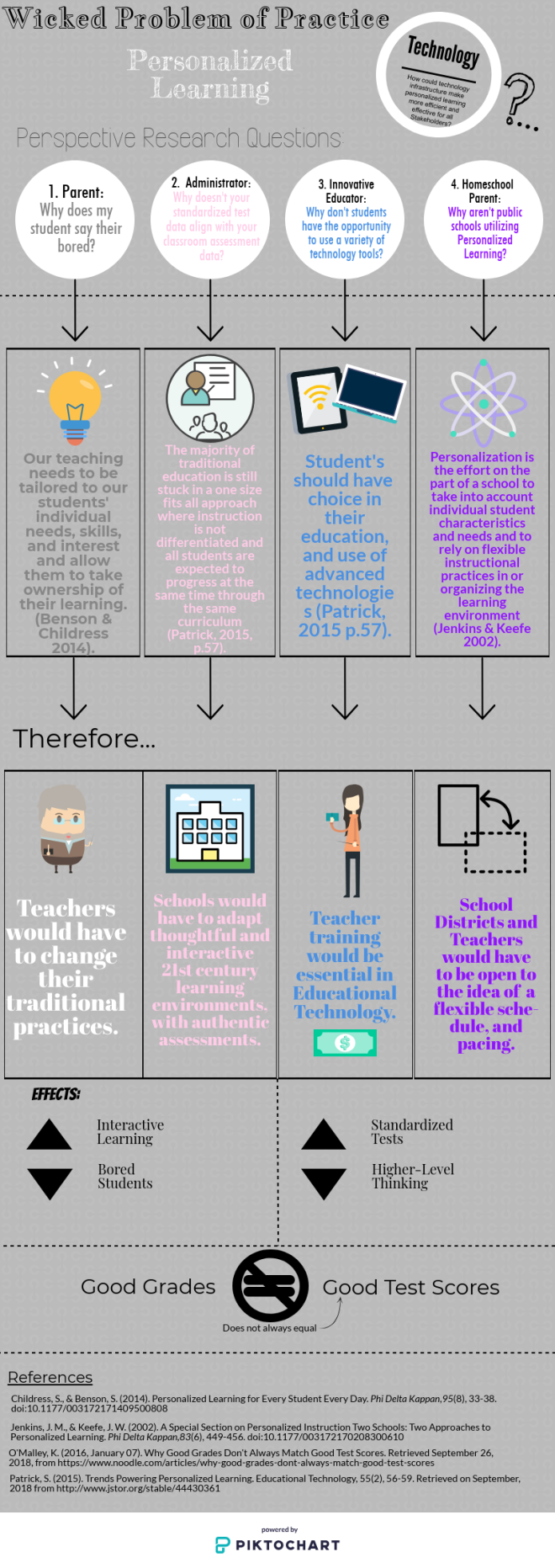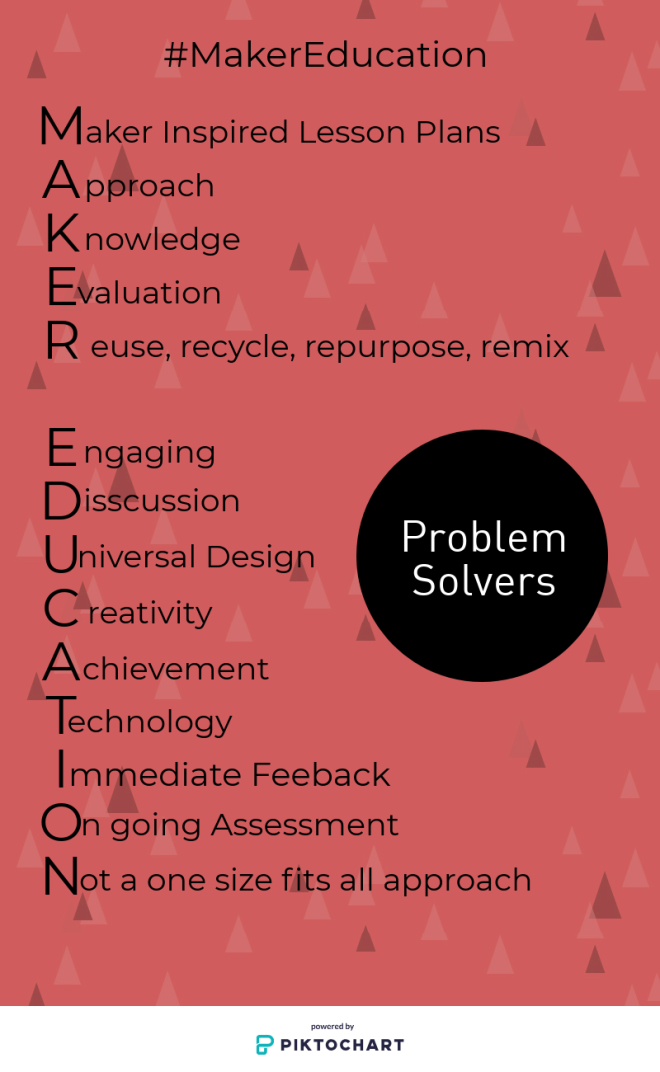Throughout CEP 812, I read a book by Warren Berger, titled, A More Beautiful Question: The power of inquiry to spark breakthrough ideas (2014). Berger says, “Questions (the right ones, anyway) are good at generating momentum, which is why change-makers so often use them as a starting point” (p. 266). In order to know what changes to make to improve something, we need to start asking questions. I have also learned about the importance of looking at a question from multiple perspectives to gain better insight as to how to begin to solve a problem (Berger, 2014, p. 259). We have talked about the importance of questioning, and how it allows us to explore new ideas and ways of thinking.
I have a passion to make a difference in the lives of all my students. I strive to differentiate instruction and learn different teaching techniques to meet every students’ individual learning needs. Technology has allowed me to present content to my students in a purposeful way. Dr. Mishra stated in his keynote speech at the 21st Century Learning Conference (2015), “There is no such thing as an educational technology. What we have is a variety of different technologies and our job as educators is to repurpose, and customize them for our needs.”
Image retrieved from tpack.org
Although I have taken a hiatus from the classroom for the past 2 years, I am looking forward to taking the ideas and concepts I have learned and apply them to my teaching when I return. Thomas L. Friedman’s article, It’s P.Q. and C.Q. as Much as I.Q. (2013), Friedman argues that we need P.Q. (passion quotient) and C.Q. (curiosity quotient) to be a lifelong learner and successful in the 21st century. Educators need to be passionate about all of the students in their classroom and their understanding of the content. We need to take into consideration how to best teach our students. Be curious and question daily decisions. I have reflected on the following:
(a) How I bring passion and curiosity to my work as an educator
(b) How questioning, impacts my passion and curiosity in the classroom
(c) How technology plays a significant role
I want to continue to express my passion for education and engage in self-reflection in order to become an even better teacher. In Thinglink below, I portray more about how I bring passion and curiosity to my work as an educator, and how I use questioning based on passion and curiosity, and the technology plays in my classroom. Click on embedded content if it does not show, please click on the following link: https://www.thinglink.com/scene/1108807029423603713
References
Berger, W. (2016). A more beautiful question: The power of inquiry to spark breakthrough ideas. New York: Bloomsbury.
Friedman, T. L. (2013, January 30). It’s P.Q. and C.Q. as Much as I.Q. Retrieved from https://www.nytimes.com/2013/01/30/opinion/friedman-its-pq-and-cq-as-much-as-iq.html
Mishra, P. (2015, July). 21CLI – Punya Mishra – Keynote Speaker (4th Annual Conference). Retrieved June 22, 2018, from https://www.youtube.com/watch?v=3xf5tD-XOzQ&feature=youtu.be







